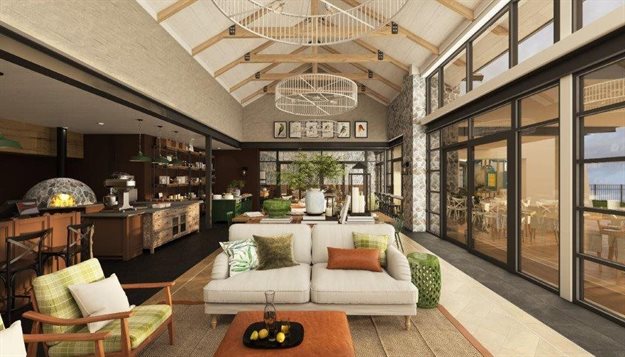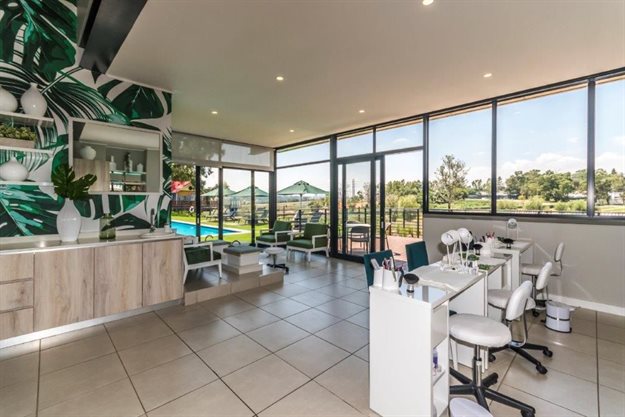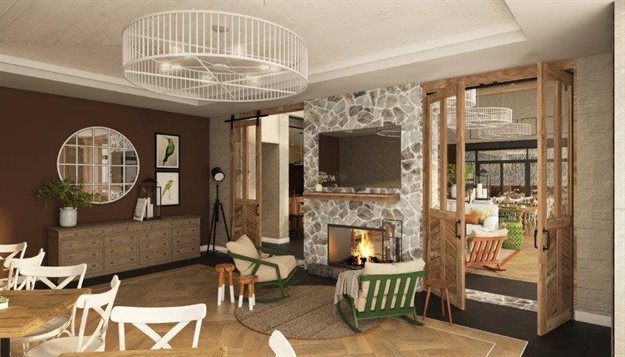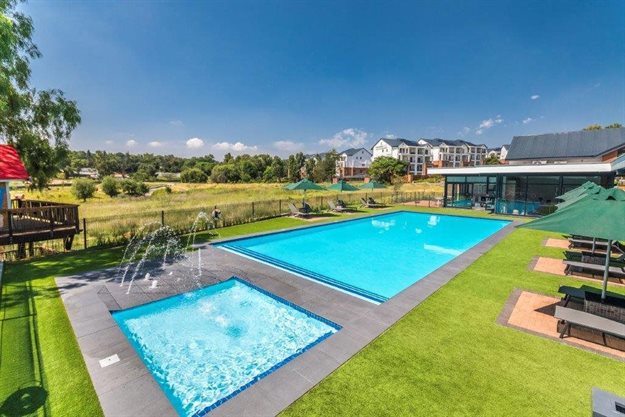Top stories






Marketing & MediaIgnition Group is set to open doors to learning with new senior library at Liv Village
Ignition Group 15 Oct 2025
More news
































HR & Management
Misconduct vs incapacity: Navigating workplace alcoholism






Nomamfengu Mbele, sustainable building consultant at Solid Green Consulting, explains that the siting of the project provided interesting opportunities for the professional team. “The site – to the east of the N3 (Eastern Bypass), south of Marlboro Drive (M60) and north of London Road (M40) in the Linbro Park area – falls outside the central business district, and contains a wetland. This challenging location encouraged the team to consider sustainability initiatives which ensure that the development is contributing to its environment – including the development of a watercourse management plan; wetland rehabilitation; and a focus on ensuring minimal light pollution from the lifestyle centre.”
The upgrade to the degraded wetland system, which is directly adjacent to the lifestyle centre, included using the wetlands as an attenuation and water treatment system for stormwater. The lifestyle centre opens towards the wetland area, and the landscape design integrates the swimming pool and restaurant with the wetland area. A nature trail through the wetland is also part of the wetland rehabilitation plan.

As the lifestyle centre is targeting a net-zero carbon rating, its 15kWp photovoltaic solar system will be expected to meet 100% of the building energy's needs – which is also possible thanks to the array of energy efficiency measures that have been implemented, explains Mbele. All enclosed spaces are individually switched, making it easy to light only occupied areas. And zoning does not end at the lighting system – the HVAC units have motion sensors that switch the units off if spaces remain unoccupied for a predetermined time. Balwin is targeting an overall energy consumption of -9kWh/m2/year, far less than the 125kWh/m2/year SANS10400 XA requirement.
Air quality sensors were installed to continuously measure the air quality, carbon dioxide, carbon monoxide, particulate matter (dust) and nitrogen dioxide in the centre. This information, together with data on energy and water consumption, is displayed publicly throughout the building as a learning resource, because the behaviour of users is critical to reducing consumption. Circuit level monitoring has also been implemented, which allows for a more specific data collection process from individual circuits to optimise operations and align with net-zero carbon reporting requirements.

The overall water demand of the building has been reduced to 800m3 per annum through the use of water efficient fittings, xeriscape landscaping and a grey water system installed to reuse water used in the laundromat.
As client, contractor and quantity surveyor on the project, Balwin Properties paid attention to the selection of construction materials as well as waste management practices. This includes specifying concrete types which result in a 40% reduction of the quantity of Portland cement, steel products with 90% recycled content, and masonry units with a minimum of 20% perforation. Balwin also committed to 20% of the project contract value being dedicated to products sourced within 400km of the site; and 1% of the project contract’s value comprises recycled/reused materials. An internal waste recycling storage area has also been provided, which allows for occupants to further divert waste away from landfill.

The concept for The Reid was urban living surrounded by natural beauty, and the interior spaces are all aimed at creating a mood of rest and wellbeing through the use of colour, light and texture.
Gabriel Hugo of LYT Architecture says that focus was placed on creating ambient light without glare, that changes over the course of the day as the sun shifts. “This was done using large overhangs, south-facing clerestory windows and rotatable shading screens. The ample natural light thus provide, together with views over the adjacent wetland, a strong sense of seasonal and diurnal cycles.”
“Balwin’s Lifestyle Centres are a fundamental part of their offering to residents,” says Verissimo Tavares, director at VTC Architecture. “From an architectural perspective, the focus was on passive design and responding to the development’s unique context. Natural lighting and ventilation, together with insulation for optimal thermal control, have created a very pleasant interior environment.
“Sustainability is also about how the building is used by people, now and into the future. This lifestyle centre building is people-centred and fit-for-purpose, with a scale that is appropriate to this development. I believe that it works well for the residents and will serve its purpose for a long time to come.”
The centre’s windows have openable sections and, in spaces where this was not possible, wall vents have been installed to allow fresh air to circulate. In the gym, wall fans have been installed in strategic positions, to push the fresh air through the space.

To enhance the connection to nature, several biophilic features were incorporated. These include the use of natural material such as timber and stonework in the interiors, views over the wetland, and elements that evoke nature – such as the pool and its water fountain which creates both visual and auditory interest. The objective of this connection with natural systems is to heighten both awareness of nature and encourage environmental stewardship of the surrounding ecosystems.
Healthy materials were also specified where possible which, Hugo says, is becoming a norm in the industry. “Most construction industry suppliers are conscious of green design so there is quite a wide variety of products available. This dynamic has changed a lot in the last 10 years – sustainability has become a selling point for suppliers.”
“Growing the knowledge economy is essential in these times of climate- and health-related stresses,” says Marloes Reinink, director at Solid Green. “In order to respond responsibly to user needs, clients and professionals need up-to-date, quality, accessible data to inform their decision-making processes on new projects. This is why we applaud two of Balwin’s initiatives that allowed us to target Green Star Innovation points for this project – financial transparency and upskilling of the professional team.”
Mbele explains that Balwin committed to sharing the financial information related to the design, construction and operation of The Reid Lifestyle Centre with Green Building Council South Africa, thus contributing to the body of research regarding assumptions surrounding ‘additional costs’ associated with sustainable developments. The project also committed to providing the contracting and design team with greater knowledge and skills on the entire Green Star certification process through the GSSAAP Online Course, which will also benefit future Balwin projects.
Additional innovation points were gained by targeting two certifications – both the six-star Green Star PEB Design rating and the Net-zero Carbon Level 2 (Operational Emissions) rating. This encouraged the team to rethink their typical development processes to include sustainability initiatives from the outset of the development. In addition, the residential density of the estate was increased to over 70du/ha, and motorised transport was discouraged by ensuring that living units are within walkable distance of the lifestyle centre; and by designating parking spaces near building entrances for occupants with zero to low carbon-emitting modes of transport.